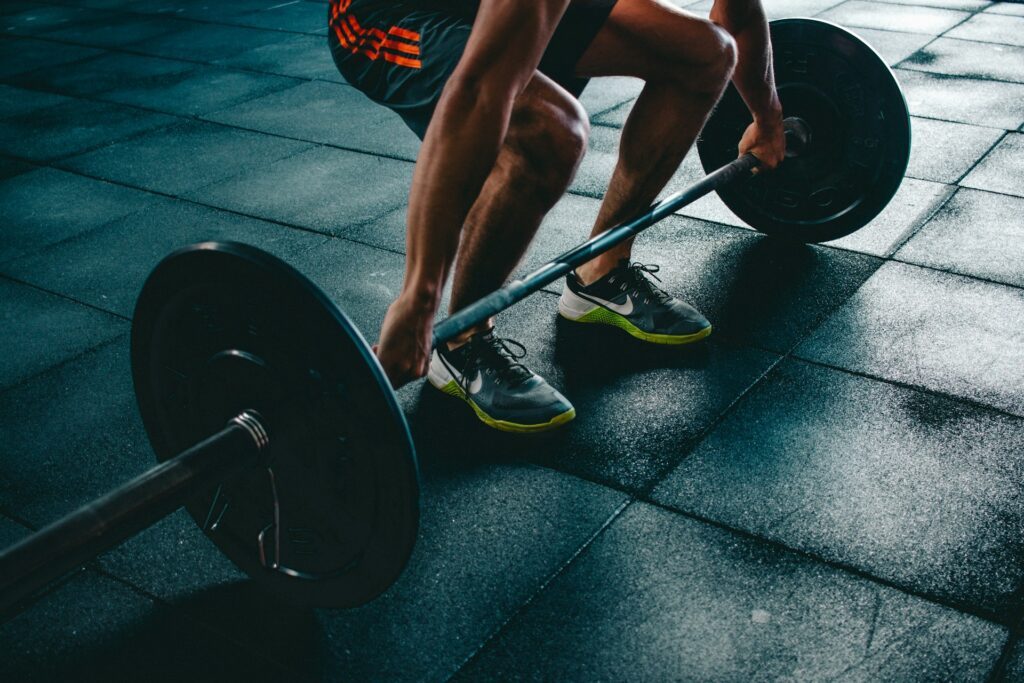A term that has gathered some momentum in recent times is the concept of starvation mode. Like many of the other new age terms floating around the fitness industry, it lacks substance and generally has a very simple explanation.
So what is starvation mode?
Starvation mode basically claims that at some point when your body is subject to a lengthy dieting period or low calorie intake your body will halt fat loss in order to survive. Basically, no matter what this person does they can’t lose fat.
Whilst the concept does have some truth to it, a better understanding of the actual mechanisms at hand would allow people to put actions in place to ensure future fat loss success.
The part of starvation mode that holds true is that your body will respond to periods of time in an energy deficit and after long enough there will be a point where that calorie deficit will no longer yield results. This is actually a well-known mechanism within the body called adaptive thermogenesis. This is a natural process your body will implement in order to restore the balance between energy coming into the body vs energy going out. More on this in a second. Before that you need to make sure you are super clear on how fat loss is achieved.
The underlying principle that will dictate successful fat loss is calorie deficit. If you don’t know what that is, basically the amount of energy we expel day to day, week to week must be more than what we consume day to day and week to week. In a calorie deficit your body will mobilise stored fat in order to produce energy needed to survive and function. Outside external intervention (surgery) there is no other way to lose fat and if you are in a calorie deficit for a long enough period of time there is no way you won’t lose fat.
What does this tell us?
Basically, you can look to address any other factor you like but at the end of the day if it doesn’t help you achieve a deficit you won’t get your desired result. The reason I say this is because people often put a lot of effort into everything but achieving that deficit. It’s like having a math exam coming up and studying for science and english. You’ll end up very knowledgeable in science and english but that’s not going to help in passing your math exam. No matter how many fitness supplements you take to ‘balance your hormones’ or superfoods you eat to ‘reduce inflammation’ if you’re not in an energy deficit fat loss won’t occur.This is not too say that addressing other factors will not be effective or necessary and in some cases they are. But if the main goal is to lose fat then they must be implemented in order to ASSIST achieving the required deficit, not REPLACE it.
Ok, so now it should be clear that if you are in a deficit then you will lose fat. Provided you are engaging in resistance training and eating a high protein diet, fat is your bodies preferred fuel source in negative energy conditions. We also mentioned that the mechanism behind fat loss stalling and what makes it hard for people to continue is adaptive thermogenesis, NOT starvation mode. The human body doesn’t like being in an energy deficit. It would much rather have balance, that is the right amount of energy coming in for what it expends. For that reason when we reduce our food (energy intake) the body will find ways to reduce energy output and even try and increase energy input, this is how fat loss stalls. The easiest way to look at this is to see how the body expels energy and then how it is effected by dieting.
Basal Metabolic Rate (BMR)
All systems and metabolic processes in the body require energy. BMR essentially refers to sum of these energy outputs when our body is at complete rest.
In order to conserve energy, the body will begin to lower the output of some of these systems and become more efficient. Firstly, the bigger the individual the more energy the body requires to “keep the lights on”. If you lose weight and let’s say drop from 90kg down to 80kg, you are carrying around less weight and therefor you cost less to run hence a decrease in BMR.
A classic example of body reducing energy output is the reproductive system. When females have been dieting for an extended length of time they will lose their menstrual cycle as survival is the body’s current priority, not reproduction.
Non Exercise Activity Thermogenesis (NEAT)
NEAT is the amount of energy you burn from your day to day unplanned activity. To paint the picture, a construction worker whose job requires manual labour is going to have much higher NEAT than an admin worker who sits at a desk all day. When an individual diets, reductions in their NEAT become a huge reason why progress stalls. Basically, your body will respond to the deficit by making you move less. You will sit at every opportunity, take the car instead of walking and even fidget less. Some people even speak slower. All of this reduces energy output and is the bodies way to contribute to offsetting the deficit that you have created through eating less food.
Exercise Activity (EA)
The is pretty self-explanatory. This is the energy burnt from planned exercise. A key thing to consider here is that whilst you don’t want this to drop, it also doesn’t burn as many calories as people think. This means that if you purely try to exercise your way to fat loss then you’re taking a very inefficient approach.
Another reason why using exercise as your main driver of creating an energy deficit is not a great idea is because you can’t really accurately track how many calories you are burning (that’s right, your treadmill and/or watch is not that accurate, it is all pretty general). Tracking food whilst it may not be perfect, is a much more reliable and effective approach.
Thermic Effect of Food (TEF)
The thermic effect of food basically states that the process of digesting food requires energy and some foods require more energy to digest than others. Eating less as required in a diet, will mean the amount of energy expended digesting food will be less. Consuming high protein and fibrous foods will help offset this reduction as much as possible.
With all these physiological factors in effect, it would be remiss of us not to mention we also have a psychological drive to eat more. That is being hungry all the time and a higher perceived food focus. But we won’t go too far into that rabbit hole.
As you can see from that overview, fat loss is a constant fight between you and your body. You create a deficit and lose fat but at the same time your body is making adaptions that eventually mean you will no longer be in a deficit due to adaptive thermogenesis. What this tells us is that it’s not impossible to keep losing fat BUT it can become more difficult.
In terms of addressing adaptive thermogenesis, you first need to ensure you are actually creating a calorie deficit with your food. Do you actually know how many calories you should be eating and if so are you actually sticking to those calories consistently? If you can’t answer ‘yes’ to both of those questions then that is where you need to start first.
Say you were on the money with your calories and after 3 weeks of losing fat, you have plateaued! What can you do from there? You need to again tip that energy in VS energy out equation back in favour of energy out. From an energy in perspective it’s relatively straight forward, decrease your calories. In terms of energy out, we need to look at the systems above that expel energy. In summary;
BMR: There are probably no mechanisms or strategies you can use to increase BMR or maintain it whilst dieting.
TEF: With food intake decreasing, TEF will also decrease but you can do your best to keep it as high as possible by eating plenty of protein and fibre.
EA: As we mentioned, you shouldn’t be trying to ‘exercise’ your way to a deficit. It’s very inefficient. In terms of training, we recommend you aim to maintain similar levels as to what you were performing previous to your cut.
NEAT: Natural decreases in NEAT as we diet can quickly bring progress to a halt if not monitored. This is often a big reason to why you hear people say “I am so strict with my calories but I am not losing weight”, their NEAT has dropped drastically. The individual could have been doing 11k steps a day prior to a diet, now 8 weeks in their steps are averaging 5k per day. That’s a massive difference in terms of weekly energy output. Monitoring the individuals step count can be a very effective measure to control NEAT.
So we have determined that ‘starvation mode’ is essentially a misinterpreted version of adaptive thermogenesis. We have also just shown you that adaptive thermogenesis will create stalls in progress that can be dealt with by decreasing calorie intake or increasing energy expenditure. Now as you keep decreasing calories and increasing expenditure to address these fat loss stalls there is going to eventually become a time where it is no longer viable or sustainable.
But what if you still have fat you want to lose?
This is likely the reason people come to the conclusion that they have hit ‘starvation mode’. A prime example is someone that has yo yo dieted for years and are now in a position where they have fat they want to lose but are maintaining on very low calories. They will make initial changes that will result in a small loss but very quickly they will get too a place where their calories are very low, activity is very high and they just can’t push it anymore. But again, the reason that fat loss is not occurring isn’t because it can’t, it 100% can. It’s because the calorie deficit that is required is very hard to achieve and is likely unsafe or simply not viable. If this is the case you will need to do a reverse/recovery diet to set yourself up for future fat loss.
Summary
The term starvation mode is simply a misinterpretation of adaptive thermogenesis. The critical difference between these terms is that when fat loss stalls, starvation mode states that there is nothing you can do to keep pushing fat loss along. As we explained in this article, this is false. You can continue fat loss, but what that would require is often not viable or acceptable. Adaptive thermogenesis is a survival mechanism of the body that you would be happy to have if you were stuck on an island as it decreases your energy output and can prolong your life. Dieting, we don’t really want it but it is an unavoidable situation. Whilst it does make fat loss increasingly harder, it does not make it impossible.







